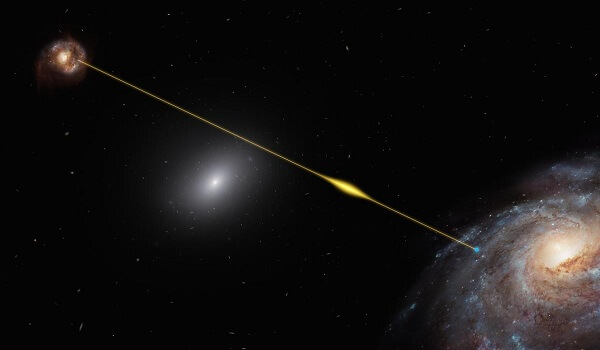International team of astronomers studied repeating Fast Radio Bursts (FRB), FRB 20190520B, using the Green Bank Telescope in the U.S. and the Parkes Observatory in Australia. The report was published in the journal Science.
Fast Radio Burst (FRB)
- The phenomenon of Fast Radio Burst (FRB) was first detected in the Milky Way Galaxy in 2007.
- In a Fast Radio Burst (FRB) event, the burst of X-rays is short lived and very rapid. This explosion is very bright.
- Fast radio bursts (FRBs) have extremely short (millisecond-scale) event periods, making them difficult to detect and determine their position in space.
- Ever since scientists became aware of the phenomenon of fast radio bursts in 2007, they have been working towards finding its original source.
- X-rays in space are generated by celestial bodies. X-rays are produced when the magnetic field of a celestial body changes.
Key Highlights of the Study
Highly Variable Faraday Rotation Measure
- The astronomers discovered that the Faraday rotation measure of the repeating FRB 20190520B was highly variable and reversed direction twice.
- This measure is an indicator of the FRB’s magnetic field strength.
Binary Star System
- The variation in the FRB’s magnetic field strength and the direction of the reversal led the researchers to conclude that the FRB source is likely orbiting a binary star system, where the companion star is possibly a massive star or a black hole.
- This led to the raising of the possibility that “all repeating FRBs could be in binaries.” However, further monitoring and research are required to confirm this hypothesis.
Turbulent Magnetized Plasma Environment
- The observed changes in the magnetic field and electron density around the FRB source suggest the presence of a turbulent magnetized plasma environment.
- This environment likely influences the behavior of the FRB signals.
Importance of Radio Telescopes
- The study underscores the significance of advanced radio telescopes in studying FRBs and other intergalactic phenomena.
- These telescopes, such as the Very Large Array and the Deep Synoptic Array-110, enable precise localization of FRBs and provide valuable data for understanding their sources and characteristics.
Unraveling Cosmic Mysteries
- The study emphasizes the role of radio astronomy in unraveling cosmic mysteries and deepening our understanding of the universe.

